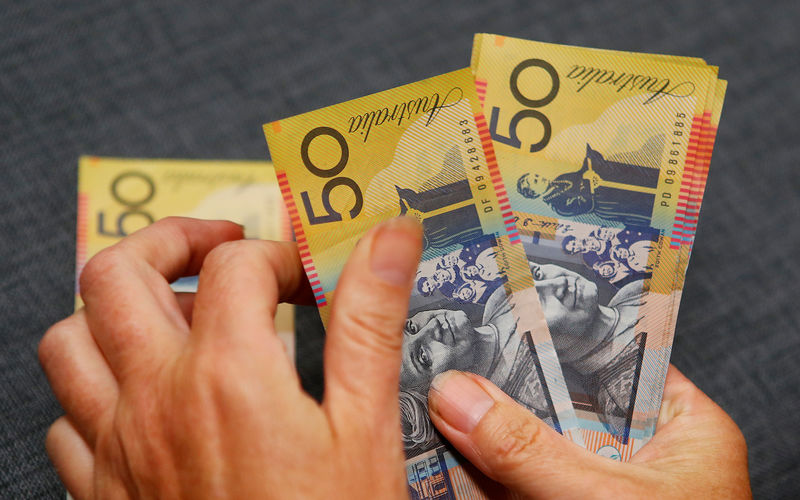(Bloomberg) -- Australia’s dollar is set for a turbulent 2020 as uncertainty around global growth, trade and interest rates divide analysts’ forecasts for the currency.
Rabobank and Nomura Holdings Inc. see the Aussie dropping about 5% to 65 U.S. cents by December, wrenched lower by cooling economic growth and a dovish central bank. Others disagree: the currency may jump 14% to 78 U.S. cents in the same period on easing U.S.-China trade tensions, according to Monex Europe Ltd.
“A worsening in trade tensions is the biggest risk for the Aussie dollar,” said Ranko Berich, head of market analysis at Monex in London. There are signs the world’s two biggest economies are likely to strike a compromise, and the Aussie will “benefit from a knee jerk risk-on reaction to the finalization of a phase one trade deal,” he said.
Australia’s dollar has slumped about 3% this year as the U.S.-China trade war has pummeled risk assets, and taken an extra-large toll of the Aussie due to its role as a proxy for China’s economy. The currency slid to a 10-year low of 66.77 U.S. cents in August before stuttering along to trade at 68.29 cents late on Tuesday in Sydney.
Shrinking Australian bond yields are also having an impact. The Reserve Bank of Australia has cut its benchmark rate three times this year to a record-low 0.75% in an effort to revive growth. Futures markets are pricing in at least one more reduction in the first half of 2020.
Asset managers have held a net-short position in the Aussie since 2017, according to data from the U.S. Commodity Futures Trading Commission. Hedge funds have also maintained bearish bets all year, although sentiment appears to be on the mend.
Read More: Asset Managers Gear Up for Quantitative Easing in Australia
Not everyone is bearish. Morgan Stanley (NYSE:MS) says the Aussie may rise to 71 U.S. cents by the fourth quarter as an improving Chinese economy fuels demand for the currency. Bank of America Merrill Lynch (NYSE:BAC) tips the Aussie to rise to 73 U.S. cents by the end of 2020 amid a recovery in global growth.
“Stronger Chinese growth, combined with improvement in the trade situation and a less dovish RBA, should have positive spillover into Asia risk and AUD/USD,” said Hans Redeker, a strategist at Morgan Stanley (NYSE:MS) in London.
Still, there are hurdles before the Aussie turns a corner.
Local economic growth has slowed to the least in a decade, households are spending less and the central bank’s full employment target remains elusive. The RBA is starting to consider quantitative easing and may resort to it after the cash rate drops to 0.25%, Governor Philip Lowe said last month.
Rabobank strategists see the RBA potentially embarking on QE in 2020 as the Federal Reserve resumes cutting U.S. interest rates.
“Recent economic data have disappointed and we expect further monetary policy stimulus next year,” strategists including Jan Lambregts in London wrote in a note to clients. “Given our expectation that the Fed funds rate will be slashed in the second half of next year, there is a strong chance that the RBA will be announcing a bond-buying program around the same time.”
